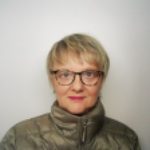Link to Pubmed [PMID] – 31204167
Mol. Cell 2019 07;75(1):131-144.e3
In Saccharomyces cerevisiae, dicentric chromosomes stemming from telomere fusions preferentially break at the fusion. This process restores a normal karyotype and protects chromosomes from the detrimental consequences of accidental fusions. Here, we address the molecular basis of this rescue pathway. We observe that tandem arrays tightly bound by the telomere factor Rap1 or a heterologous high-affinity DNA binding factor are sufficient to establish breakage hotspots, mimicking telomere fusions within dicentrics. We also show that condensins generate forces sufficient to rapidly refold dicentrics prior to breakage by cytokinesis and are essential to the preferential breakage at telomere fusions. Thus, the rescue of fused telomeres results from a condensin- and Rap1-driven chromosome folding that favors fusion entrapment where abscission takes place. Because a close spacing between the DNA-bound Rap1 molecules is essential to this process, Rap1 may act by stalling condensins.


